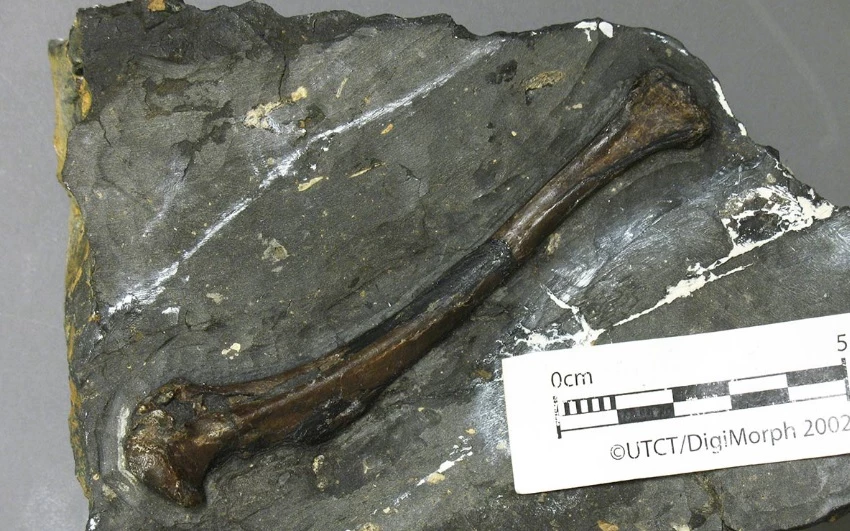Scientists from the University of Rochester have unearthed a new bird species from fossils in the Canadian Arctic dating back about 90 million years, making them the oldest records of avian species found so far north. The discovery also provides additional evidence that an intense warming event occurred during the late Cretaceous period in which the bird would have lived.
Dubbed Tingmiatornis arctica ("Tingmiat" means "those that fly" in the Inuktitut language spoken in the area where the discovery was made), the fossilized remains date from the Turonian age of the Cretaceous period about 93.9 to 89.8 million years ago, and are said to provide scientists with a fairly good picture of what the bird would have looked like in the flesh.
"The bird would have been a cross between a large seagull and a diving bird like a cormorant, but likely had teeth," says John Tarduno, professor at the University of Rochester.
The fossil and sedimentary records uncovered at the site also give a better idea of the ecosystem in the Canadian Arctic of the time, which was characterized by volcanic activity. The site was also home to a freshwater bay and had a range of temperatures similar to those experienced in subtropical zones, such as those found today in northern Florida. Other creatures also abounded in the area and included such things as turtles, schools of large freshwater fish, and extinct, crocodile-like reptiles known as champsosaurs.
"Before our fossil, people were suggesting that it was warm, but you still would have had seasonal ice," says Tarduno. "We are suggesting that is not even the case, and that it is one of these hyper-warm intervals because the bird's food sources and the whole part of the ecosystem could not have survived in ice."
Found in an area directly above fields of basalt lava that had been formed by a series of ancient volcanic eruptions, the fossils were originally laid down in a period of high concentrations of carbon dioxide being spewed out by the volcanoes. The researchers believe that this produced a greenhouse effect at the time and resulted in a period of exceptionally high temperatures in the polar region, providing a perfect environment for large birds like Tingmiatornis arctica.
A total of three bird bones were unearthed by the researchers. Included in these were a part of the ulna and pieces of the humerus (which, in birds, are both in the wings). Scientists were able to determine from the bone features, proportions, and girth a good deal about the creature, including evolutionary relationships and whether it was capable of flying or diving.
"These fossils allow us to flesh out the community and add to our understanding of the community's composition and how it differed from other places in the world," says Donald Brinkman from the Royal Tyrrell Museum in Canada.
The results of this research were recently published in the journal Scientific Reports.
The researchers explain their discovery in the video below.
Source: University of Rochester






